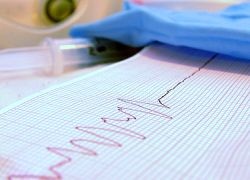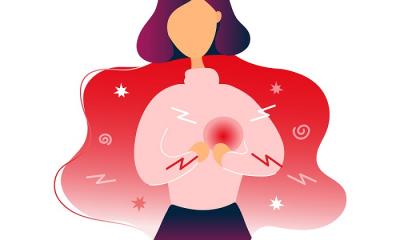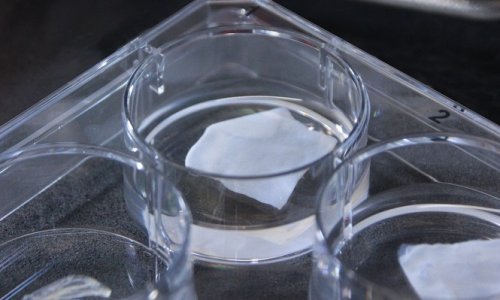Cardiac resynchronisation therapy
Switzerland - A clinical trial of cardiac resynchronisation therapy (CRT) in patients with advanced heart failure and a narrow QRS complex <120 ms, has been initiated by Zurich University.

The clinical benefits of CRT, as an adjunct to drug therapies, in patients with NYHA class III/IV heart failure (HF) have been shown repeatedly in randomised trials and clinical practice. The Miracle ICD trials [Young JB, Abraham WT, Smith AL, et al,. Combined cardiac resynchronisation and implantable cardioversion defibrillation in advanced chronic heart failure: The MIRACLE ICD Trial. JAMA. 2003;289:2685-2694], and Companion trials [Bristow MR, Saxon LA, Boehmer J et al. Cardiac-resynchronisation therapy with or without an implantable defibrillator in advanced chronic heart failure. N Engl J Med 2004;350:2140-50] suggested that CRT, which paces the left as well as right ventricles simultaneously, used in conjunction with an implantable cardioverter defibrillator (ICD) improved the quality of life, functional capacity and exercise test performance in patients with HF with a wide QRS (ƒ120 ms) interval. Indeed current guidelines for the selection of suitable patients for CRT based on the published evidence advise that optimal candidates to benefit from CRT have QRS >120 ms. [Strickberger SA, Conti J, Daoud EG et al. Patient selection for cardiac resynchronization therapy: from the Council on Clinical Cardiology Subcommittee on Electrocardiography and Arrhythmias and the Quality of Care and Outcomes Research Interdisciplinary Working Group, in collaboration with the Heart Rhythm Society. Circulation 2005;111:2146-50.]
This means that until now, the majority of HF patients, those with a narrow QRS complex, have been excluded from CRT, although suffering from dyssynchrony. The Echocardiography guided Cardiac Resynchronisation Therapy (EchoCRT) study aims to provide the necessary evidence base to expand therapeutic options for this population.
EchoCRT is the first prospective, randomised clinical trial to evaluate the impact of cardiac resynchronisation therapy in HF patients (NYHA Class III) who show mechanical dyssynchrony as assessed directly by echocardiography. Echocardiogram (ultrasound of the heart) will provide a direct measure of ventricular dyssynchrony, which is not apparent on indirect assessment by ECG because of the narrow QRS. More than 1,000 patients with advanced HF (NYHA Class III) will be randomised into treatment groups with CRT or no CRT. Both groups will receive an ICD to protect against sudden cardiac death, but in only half of the patients will the CRT capacity be switched on.
The co-principal investigators in Zurich are Dr Frank Ruschitzka and Dr Johannes Holzmeister.
In an interview with Dr Ruschitzka, we asked why Zurich has become the international centre for this study and what the rationale is behind the EchoCRT trial.
‘This is a very large clinical trial of a medical device and will involve 120 different centres worldwide, but it’s led by Zurich because of our wealth of experience in clinical cardiology trials.’ The trial is sponsored by Biotronik, which manufactures the implanted devices but, Dr Ruschitzka pointed out, ‘EchoCRT is an independent, investigator led trial overseen by an international executive committee.’
‘Many cardiologists feel, as I do, that we are not treating many HF patients who would benefit from CRT simply because there are no scientifically evidence-based guidelines telling us to. I have used CRT successfully in patients with narrow QSR, and so have many others. The medical literature supporting this belief is increasing with observational studies and anecdotal cases of success in several thousands of these patients.
‘The ESC recently conducted a poll asking its members if they thought patients with a narrow QSR would benefit from CRT. The time is now right for a large-scale, international trial to provide the definitive answer. Recruiting will begin in the first quarter of 2008 and will probably last for up to two years. The trial itself will probably run for a further two or three years after recruiting is complete depending on when we reach the numbers required statistically of primary end-point. It would be stopped immediately if it became obvious that the benefits of CRT therapy were statistically superior. The results are due in 2011.
‘I’m very confident that CRT is the way to go with HF patients with narrow QRS. These are very sick patients with a high morbidity and mortality. I am convinced that it is unwise to withhold CRT from this population and that EchoCRT will provide the necessary evidence to support this treatment change.’
01.09.2007











